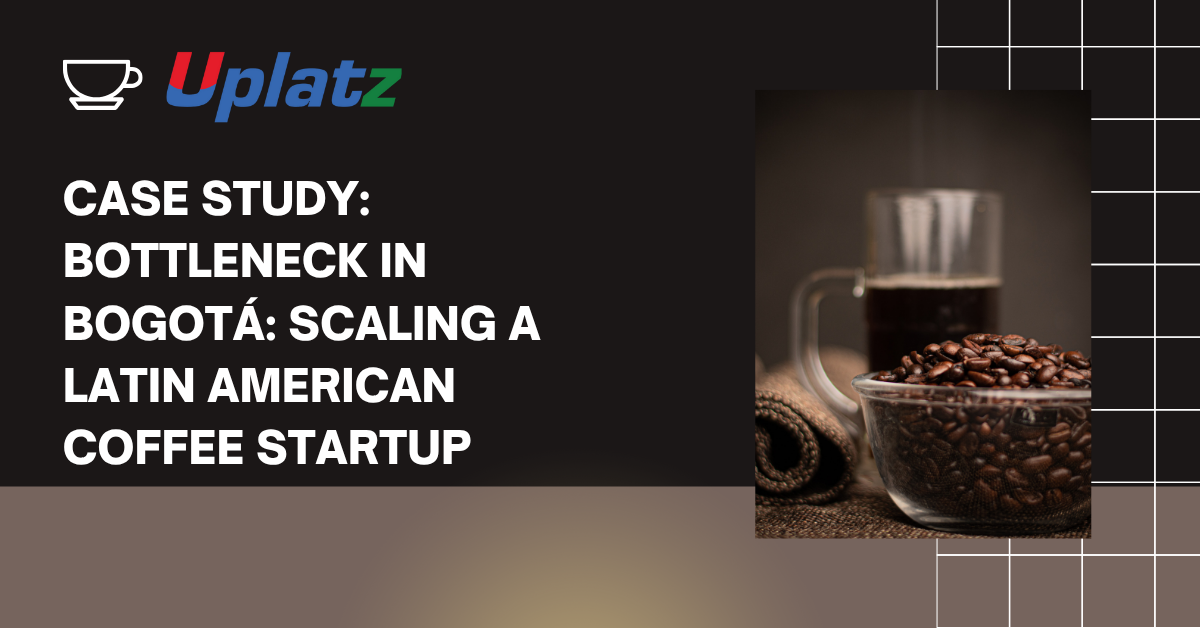📘 Case Study:
“Bottleneck in Bogotá: Scaling a Latin American Coffee Startup”
Company Background
TerraBean Co. is a fast-growing Colombian coffee startup founded in Bogotá in 2018. The company sources premium Arabica beans from smallholder farms in the Andean region and sells freshly roasted, single-origin coffee in eco-friendly packaging.
TerraBean positions itself as a “sustainable luxury” brand in the specialty coffee sector, with a strong mission around fair trade, farmer empowerment, and climate-smart agriculture. Their motto: “Rooted in Colombia. Brewed for the world.”

Learn more here: https://uplatz.com/course-details/amazon-neptune/662
By 2024, the company had:
- Opened 12 branded cafés in Colombia
- Built a thriving e-commerce presence in the U.S., UK, and Canada
- Partnered with 70+ farms and 2 regional cooperatives
- Earned features in the Financial Times, GQ, and The Guardian
Growth Ambitions
In 2025, TerraBean secured a $6M Series A round from an impact investor group to scale its international D2C and B2B channels. The plan includes:
- Tripling exports to North America and Europe
- Opening 2 flagship cafés abroad (London and Toronto)
- Launching a subscription box and a limited-edition capsule collection
However, just as growth accelerates, operational bottlenecks threaten TerraBean’s momentum.
Operational Challenges
🚧 1. Roasting Capacity Constraints
The Bogotá roasting facility is operating at 93% capacity, leading to shipment delays, inconsistent roasting quality, and missed wholesale orders. A proposal to build a second roastery in Medellín is being evaluated.
🌍 2. Export Logistics Bottlenecks
Shipping times to North America now exceed 23 days, worsened by port delays, customs inconsistencies, and reliance on a single freight forwarder. Freight costs are up 19% YoY.
📦 3. Inventory Visibility Issues
TerraBean lacks an integrated supply chain system. Forecasting is done in Excel, and raw bean stockouts are becoming frequent due to miscommunication between farm cooperatives and the roastery.
🌿 4. Traceability & Certification Gaps
New B2B clients in Germany and Canada are demanding blockchain-enabled traceability and climate impact metrics. TerraBean’s current tracking process is mostly manual.
The Strategic Dilemma
CEO Isabela Cárdenas and COO Luis Soto must now decide how to reconfigure TerraBean’s supply chain and operations to support its next phase of growth.
They are evaluating the following strategic priorities:
Four Key Options
Option A: Build a Second Roastery in Medellín
- Closer to southern farms and major highways.
- Reduces load on Bogotá facility.
- Estimated cost: $2.4M and 10 months to complete.
Option B: Switch to Distributed Micro-Hubs
- Use shared roasting spaces + local 3PL providers in Europe and North America to handle final roasting and delivery.
- Reduces shipping times drastically.
- Requires complex coordination and recipe/quality control.
Option C: Implement End-to-End ERP + SCM Software
- Adopt a digital platform (e.g., Odoo, Oracle NetSuite) to unify farm sourcing, inventory tracking, order flow, and demand forecasting.
- Requires major team training and operational overhaul.
Option D: Partner with a Global Logistics & Traceability Tech Provider
- Outsource blockchain traceability, carbon tracking, and freight management to a partner like IBM Food Trust or Maersk Flow.
- May dilute TerraBean’s artisanal image but satisfies large buyer requirements.
Key Metrics (2024)
| Metric | Value |
| Annual Revenue | $8.7 million |
| Net Profit Margin | 6.4% |
| Roasting Capacity Utilization | 93% |
| Average Shipping Time | 23.1 days |
| Forecast Accuracy | ~68% |
| Return Rate (E-comm) | 2.3% |
| Wholesale Orders (B2B) | 36% of revenue |
| Staff | 58 (22 ops/logistics) |
🔍 Student Discussion Questions
Operations & Supply Chain
- What is the most pressing operational bottleneck TerraBean must solve first? Why?
- Compare and contrast the Medellín roastery vs. micro-hubs abroad. Which is more scalable? Which is more brand-consistent?
- How can digital tools like ERP or blockchain improve supply chain transparency and agility? What challenges might arise?
- What KPIs should TerraBean monitor to ensure operational efficiency as it scales?
Strategic Thinking & Growth
- Which combination of options (A–D) would you recommend for long-term scalability and international growth?
- Should TerraBean invest in building its own logistics capabilities, or partner to stay lean? Why?
- How can TerraBean preserve its artisanal, origin-focused image while growing globally?
Sustainability & Ethics
- How important is traceability and climate transparency in B2B deals today? Is it a competitive edge or just compliance?
- What risks does TerraBean face by scaling too fast? How can it mitigate them?
- Imagine it’s 2028—what should TerraBean’s supply chain look like if it grows 5x in size?
